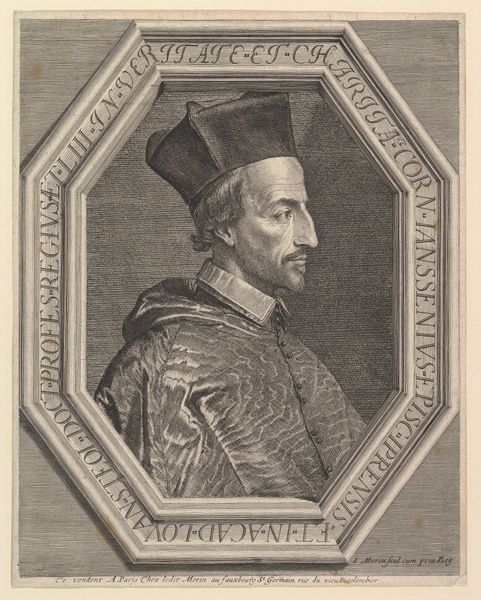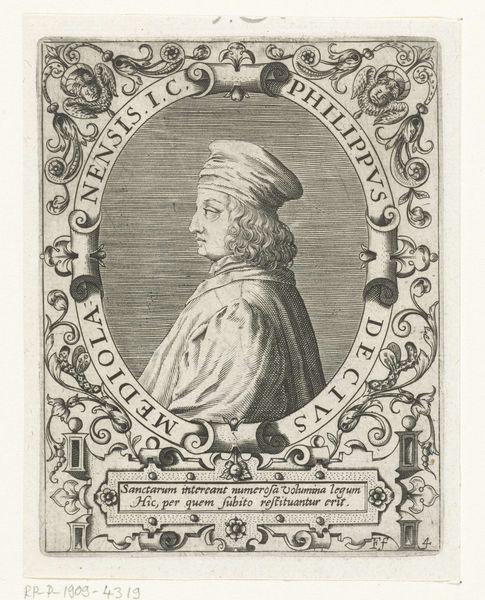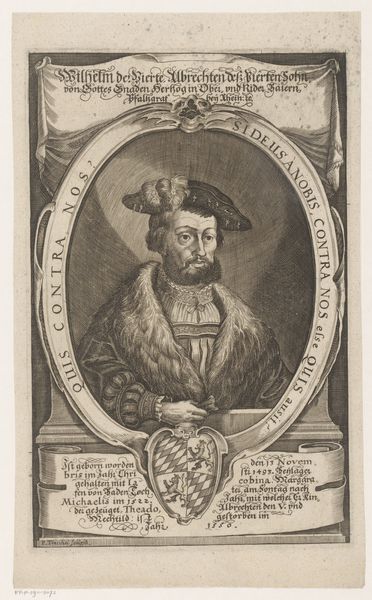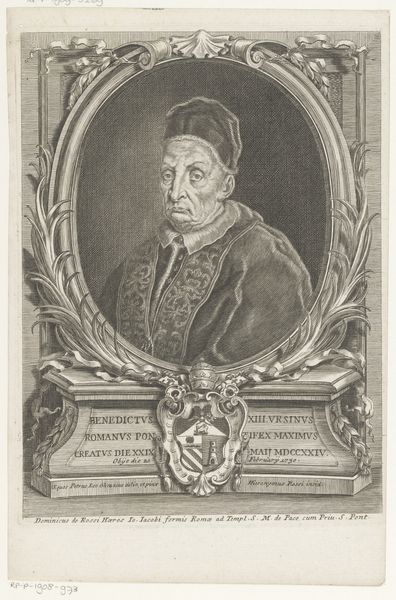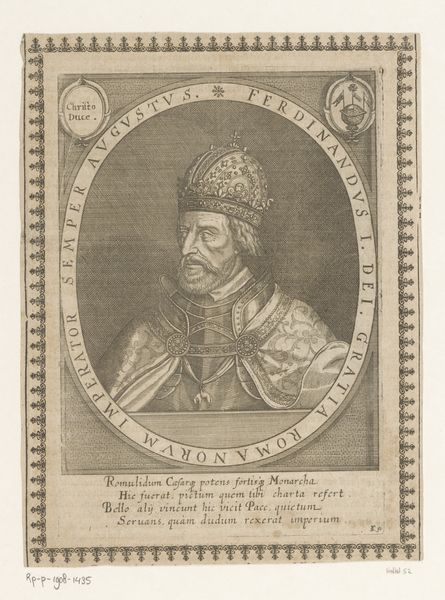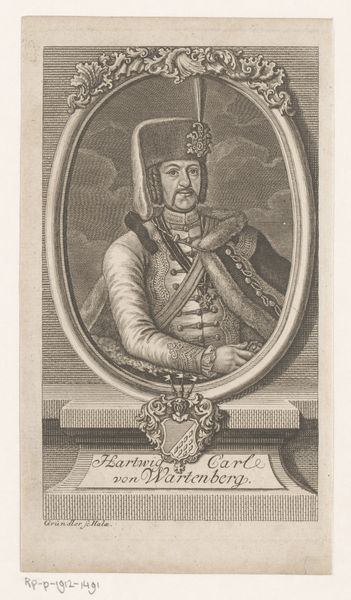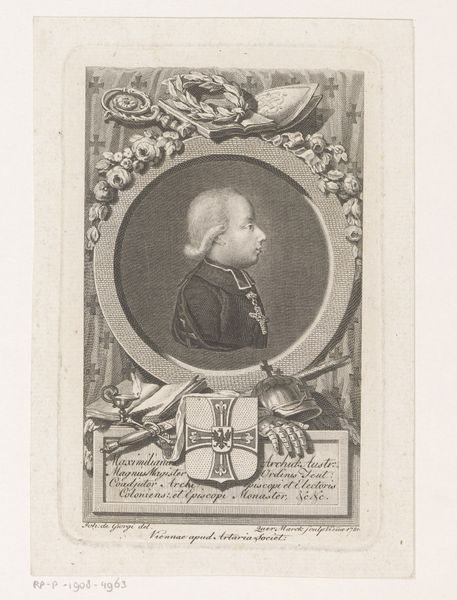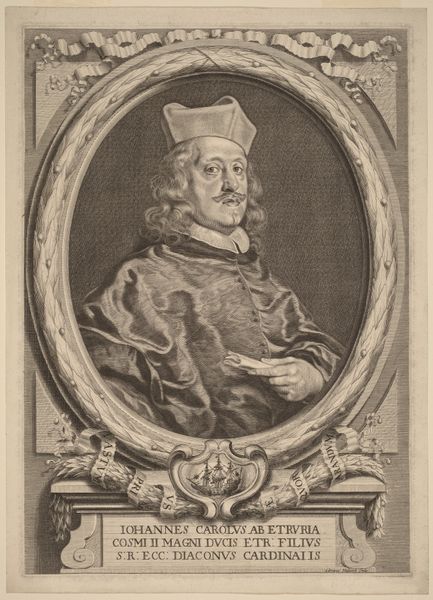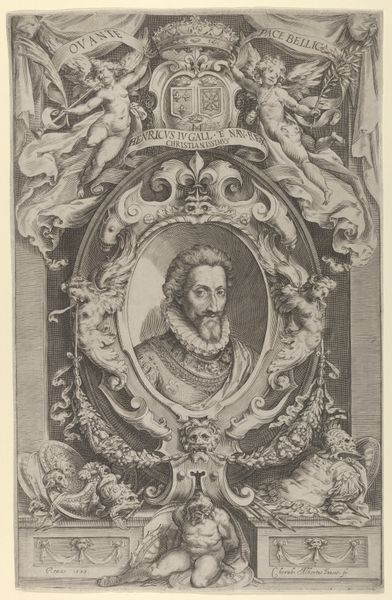
Dimensions: height 162 mm, width 103 mm
Copyright: Rijks Museum: Open Domain
Andreas Niederhofer made this portrait of Antonius Brufeius de Müglitio through etching, a printmaking technique with roots in the early 16th century. Consider the public role of art at this time. Printmaking made images more widely available; but, even in reproduction, portraiture remained the domain of the elite. Here, the trappings of wealth and power communicate status: the sitter’s garments signal the importance of the church; the family crest below connects him to a noble line; the formal pose and oval frame evoke aristocratic painting traditions. The image was made in the late 18th century, a time when social hierarchies were increasingly contested. Even as he reproduces traditional symbols of authority, Niederhofer produces this image in a relatively new medium, making it accessible to a wider audience. To understand the nuances of this work more fully, we can draw on a range of resources, from historical archives to studies of the print market in 18th-century Europe. Through such research, we can better appreciate the complex social and institutional forces that shaped its creation and reception.
Comments
No comments
Be the first to comment and join the conversation on the ultimate creative platform.

